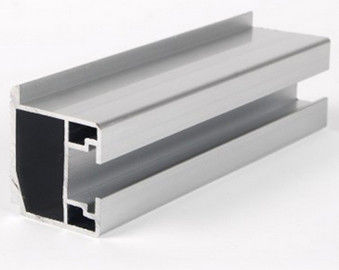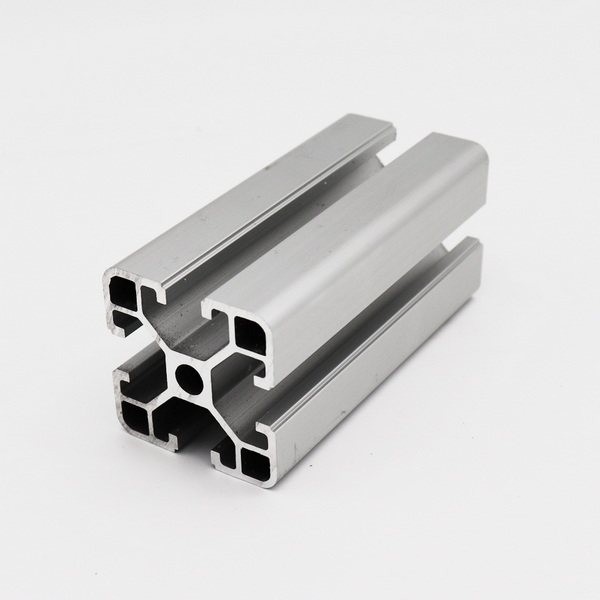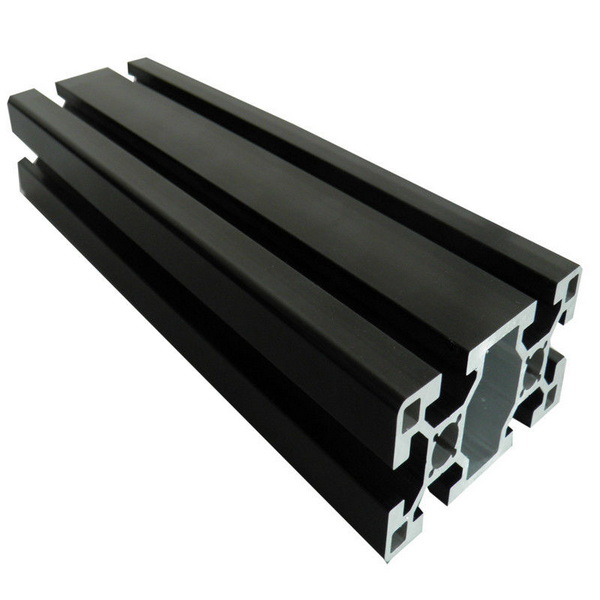Content Menu
● Understanding 6063 T5 Aluminum Extrusion
● Mechanical Properties of 6063 T5 Aluminum Extrusion
● Applications of 6063 T5 Aluminum Extrusion
● Benefits of Using 6063 T5 Aluminum Extrusion
● Visual Representation of 6063 T5 Aluminum Extrusion
● Videos on 6063 T5 Aluminum Extrusion
● Conclusion
● Frequently Asked Questions
>> 1. What is the difference between 6063 T5 and 6063 T6 aluminum?
>> 2. Can 6063 T5 aluminum be welded?
>> 3. What are the typical applications for 6063 T5 aluminum?
>> 4. How does anodizing affect 6063 T5 aluminum?
>> 5. Is 6063 T5 aluminum recyclable?
6063 T5 aluminum extrusion is a widely used alloy in various industries due to its excellent mechanical properties, versatility, and aesthetic appeal. This article delves into the mechanical properties of 6063 T5 aluminum extrusion, its applications, and the benefits it offers in different contexts.

Understanding 6063 T5 Aluminum Extrusion
6063 aluminum is part of the 6000 series of aluminum alloys, which are primarily alloyed with magnesium and silicon. The T5 temper indicates that the material has been artificially aged after being extruded, which enhances its strength and durability. This alloy is known for its good corrosion resistance, excellent weldability, and ability to be anodized, making it a popular choice for architectural applications, structural components, and various other uses.
Mechanical Properties of 6063 T5 Aluminum Extrusion
The mechanical properties of 6063 T5 aluminum extrusion are crucial for understanding its performance in different applications. Here are some key properties:
1. Tensile Strength: The tensile strength of 6063 T5 aluminum typically ranges from 20,000 to 27,000 psi. This property indicates the maximum amount of tensile (pulling) stress that the material can withstand before failure.
2. Yield Strength: The yield strength of this alloy is approximately 21,000 psi. Yield strength is the stress at which a material begins to deform plastically. Beyond this point, the material will not return to its original shape.
3. Elongation: The elongation percentage for 6063 T5 aluminum is around 10-12%. This property measures how much the material can stretch before breaking, indicating its ductility.
4. Hardness: The hardness of 6063 T5 aluminum is typically measured using the Brinell hardness scale, with values around 60 HB. Hardness is a measure of a material's resistance to localized plastic deformation.
5. Density: The density of 6063 aluminum is about 2.7 g/cm³. This lightweight property makes it ideal for applications where weight savings are critical.
6. Thermal Conductivity: 6063 T5 aluminum has good thermal conductivity, making it suitable for applications that require efficient heat dissipation.
7. Corrosion Resistance: One of the standout features of 6063 T5 aluminum is its excellent resistance to corrosion, especially when anodized. This property is vital for outdoor applications and environments exposed to moisture.
Applications of 6063 T5 Aluminum Extrusion
Due to its favorable mechanical properties, 6063 T5 aluminum extrusion is used in a variety of applications, including:
- Architectural Applications: This alloy is commonly used in window frames, door frames, and curtain walls due to its aesthetic appeal and ability to be anodized in various colors. The smooth finish and ability to hold paint and other coatings make it a favorite among architects and builders.
- Structural Components: 6063 T5 aluminum is used in structural applications such as beams, columns, and trusses, where strength and lightweight properties are essential. Its high strength-to-weight ratio allows for the construction of robust structures without excessive weight.
- Automotive Industry: The automotive sector utilizes 6063 T5 aluminum for components that require a combination of strength and lightweight characteristics, contributing to fuel efficiency. Parts such as chassis components, frames, and body panels benefit from the alloy's properties.
- Furniture and Fixtures: The alloy is also popular in the manufacturing of furniture and fixtures, where both durability and design are important. Its ability to be extruded into complex shapes allows for innovative designs in modern furniture.
- Electrical Applications: Due to its good electrical conductivity, 6063 T5 aluminum is used in electrical enclosures and components. It is often used in the production of heat sinks and other components that require efficient heat dissipation.

Benefits of Using 6063 T5 Aluminum Extrusion
1. Lightweight: The low density of aluminum makes it an ideal choice for applications where weight reduction is crucial. This is particularly important in industries such as aerospace and automotive, where every gram counts.
2. Versatility: 6063 T5 aluminum can be easily extruded into complex shapes, allowing for innovative designs in various applications. This versatility enables manufacturers to create custom profiles tailored to specific needs.
3. Aesthetic Appeal: The ability to anodize this alloy provides a range of color options and finishes, enhancing its visual appeal. Anodizing not only improves aesthetics but also increases corrosion resistance.
4. Corrosion Resistance: The natural oxide layer formed on aluminum provides excellent protection against corrosion, extending the lifespan of products made from this material. This property is particularly beneficial in marine and outdoor environments.
5. Recyclability: Aluminum is highly recyclable, making it an environmentally friendly choice for manufacturers and consumers alike. The recycling process requires only a fraction of the energy needed to produce new aluminum, reducing the overall carbon footprint.
Visual Representation of 6063 T5 Aluminum Extrusion
To better understand the properties and applications of 6063 T5 aluminum extrusion, various images and videos illustrate its characteristics. These visual aids can help in comprehending the alloy's versatility and the range of products that can be manufactured from it.
Videos on 6063 T5 Aluminum Extrusion
- [6061 vs 6063 Aluminum - How to Sort, Chemical Differences](https://www.youtube.com/watch?v=CzeRw7ggpls)
- [6063 Aluminium Alloy](https://www.youtube.com/watch?v=XJs_-2hhR1c)
- [6000 Series Aluminum - 6061-T6 - 6063-T5](https://www.youtube.com/watch?v=oOMGbTUmNwg&pp=ygUGI3Y2MDYz)
Conclusion
In summary, 6063 T5 aluminum extrusion is a versatile and widely used alloy known for its excellent mechanical properties, including tensile strength, yield strength, elongation, and corrosion resistance. Its applications span various industries, from architecture to automotive, making it a valuable material in modern manufacturing. The combination of lightweight, durability, and aesthetic appeal makes 6063 T5 aluminum extrusion a preferred choice for many engineers and designers.

Frequently Asked Questions
1. What is the difference between 6063 T5 and 6063 T6 aluminum?
The primary difference lies in the heat treatment process. T5 is artificially aged, while T6 is solution heat-treated and then artificially aged, resulting in higher strength for T6.
2. Can 6063 T5 aluminum be welded?
Yes, 6063 T5 aluminum can be welded, but it is essential to use the appropriate welding techniques to maintain its mechanical properties.
3. What are the typical applications for 6063 T5 aluminum?
Common applications include architectural frames, structural components, automotive parts, and furniture.
4. How does anodizing affect 6063 T5 aluminum?
Anodizing enhances corrosion resistance and allows for a variety of color finishes, improving the aesthetic appeal of the aluminum.
5. Is 6063 T5 aluminum recyclable?
Yes, aluminum is highly recyclable, and 6063 T5 aluminum can be recycled without losing its properties.






















